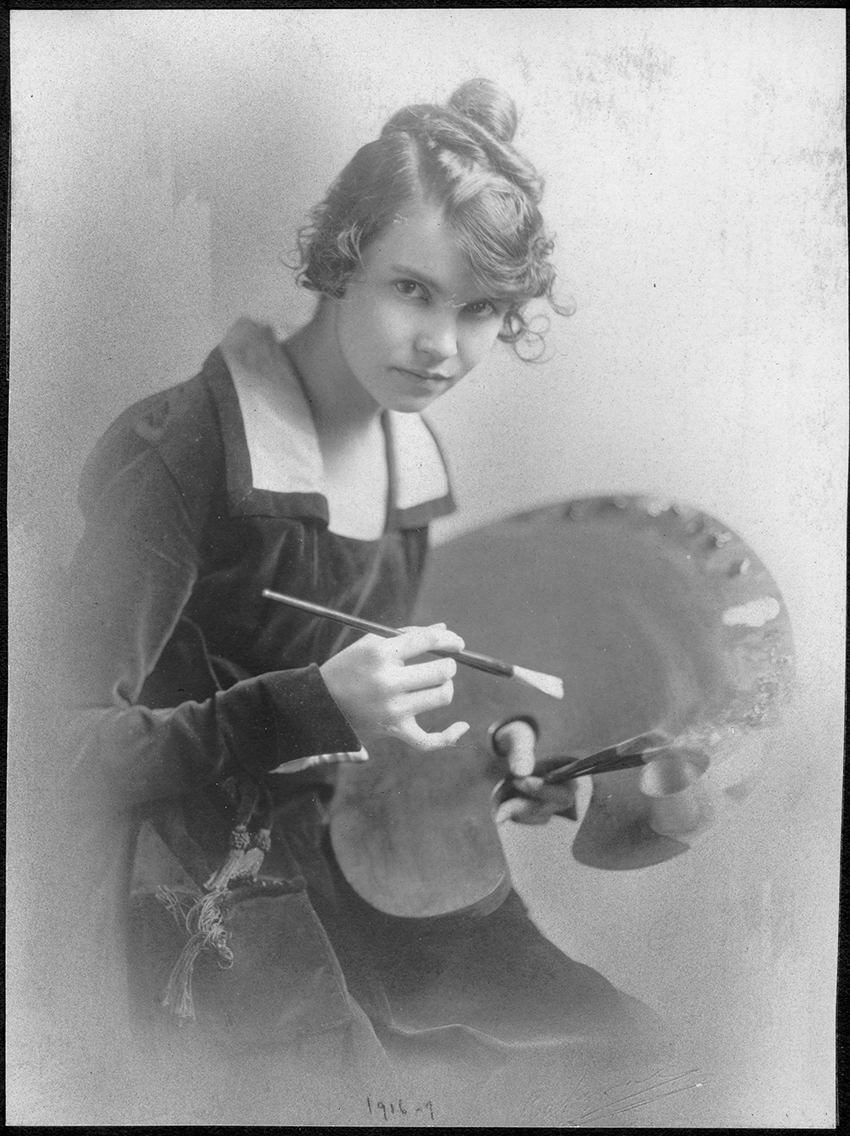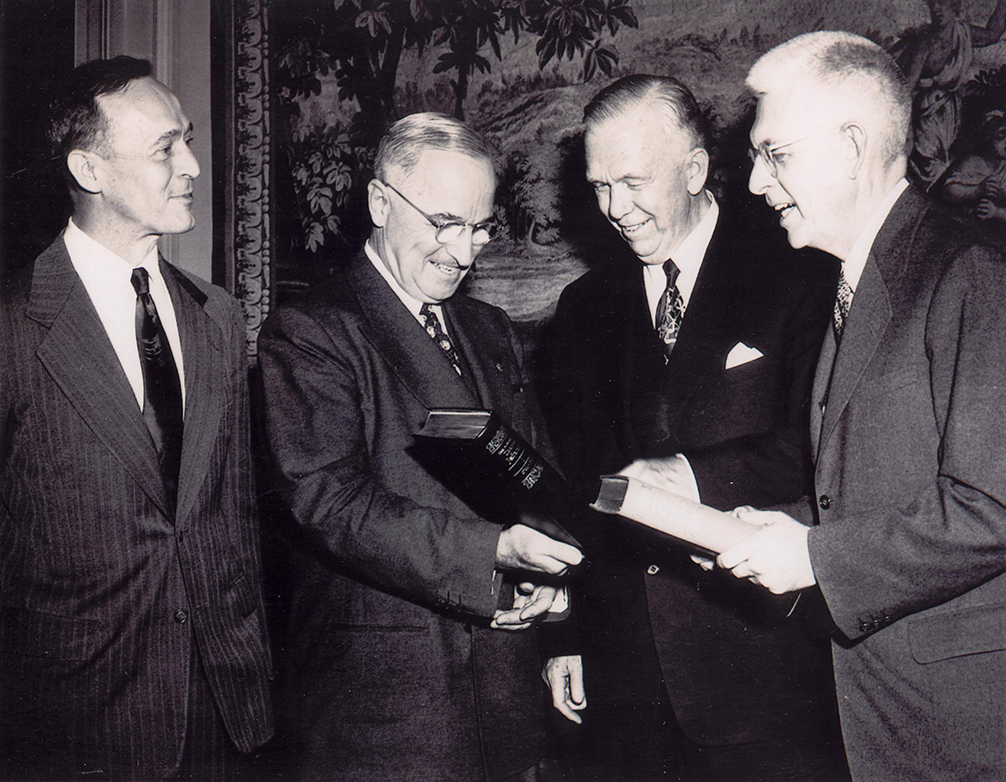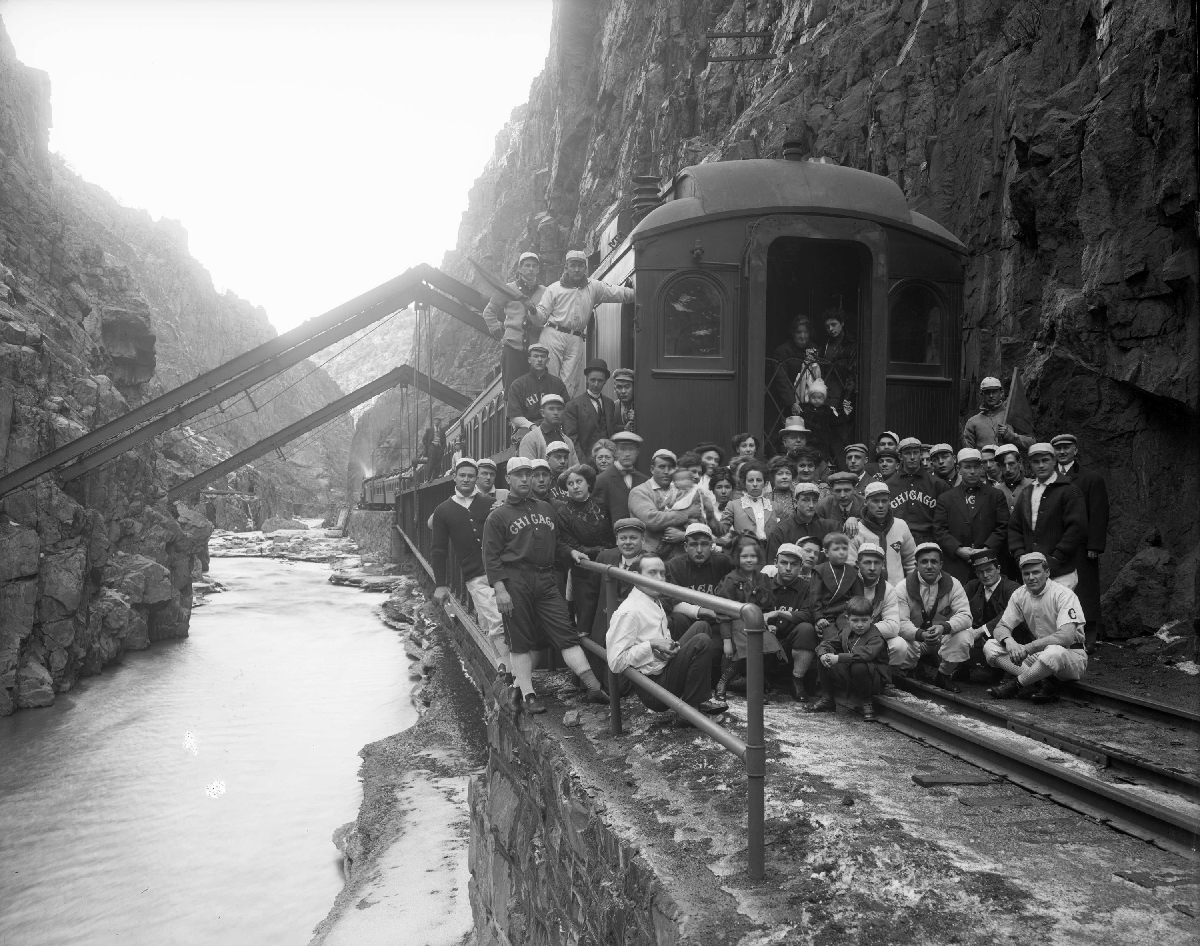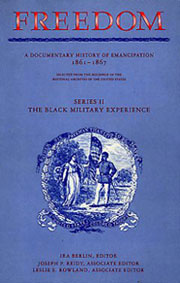
Documenting Democracy at State and Local Levels
Fall 2004, Vol. 36, No. 3
By Keith Donohue
Imagine a national archive more than twice the size and scope of the National Archives of the United States—nearly tripling the three million cubic feet of traditional archival holdings NARA preserves in the Washington area and around the country.
The mental jump is easy if you count state archives and records repositories that house the documentary heritage of governments from Alaska to Florida. This American archives increases exponentially when the hundreds of city and local government archives are added to the mass.
Imagine the American archives connected to a web of many other private institutions, nongovernmental organizations, and community associations, home to billions of documents, images, recordings, and other clusters of information—a network estimated in 1998 by the Council of State Historical Records Coordinators to be about four million cubic feet.
This "archives of archives" runs like a great river through our national consciousness: official government records at all levels providing the essential evidence for documenting our political democracy, and billions of other records and papers complementing our understanding of our diverse history and culture.
This is where the National Historical Publications and Records Commission (NHPRC) comes in. As the grant-making affiliate of the National Archives and Records Administration, NHPRC reaches out to and connects thousands of archives and records repositories across the country dedicated to preserving and publishing the primary sources of the American story in its many forms.
"The NHPRC promotes the preservation and use of America's documentary heritage essential to understanding our democracy, history, and culture," according to Executive Director Max J. Evans. "Just as NARA is a public trust for the records of the federal government, NHPRC serves as a public trust for documenting democracy. As the grant-making arm of the National Archives, we help assure that the stuff of archives is preserved, and from these raw materials comes a deeper understanding of the American story."
Over the past forty years, the Commission has awarded $153 million in grants to four thousand recipients to help strengthen the network of state government and local archives and to make documentary materials in the government's possession and those in private hands available to the public.
The types of grants varied, and so has their impact. Since 1965 the NHPRC has provided grants to publish the Adams papers, from which David McCullough drew for his Pulitzer Prize–winning biography of John Adams. The co-editor of the NHPRC-sponsored Freedom History Project, Steven Hahn, received the 2004 Pulitzer Prize in history for his new book, A Nation Under Our Feet: Black Political Struggles in the Rural South from Slavery to the Great Migration. Drawing on the works of the twenty-seven-volume edition of The Papers of Alexander Hamilton, historian Ron Chernow recently published a new monumental biography that may restore Hamilton's reputation and place in American history.
But NHPRC grants help preserve lesser-known collections also, such as the records of the early days of the Sierra Club, the archives of the Rhode Island School of Design, and the history of the Miami Tribe of Oklahoma that had been scattered in repositories in Oklahoma, Kansas, Missouri, and Indiana.
NHPRC also helped the Boston Schools Desegregation-era Records Project find and preserve records in danger of being lost in a flooded basement and the Cook County (Illinois) Local Records Commission discover Chicago's original record of the city council's vote for incorporation from September 1833, long thought destroyed by the Great Chicago Fire of 1871.
The idea of a federal program to publish our documentary heritage is as old as the National Archives itself.
"National archives have a natural history of their own," wrote J. Franklin Jameson for the Assistant Committee on the Documentary Historical Publications of the United States Government to the Committee on Department Methods in a 1908 report. Their report laid out the case for a federal program that, in conjunction with a National Archives, would publish documentary materials, whether issued by the federal government or not, that would "meet more fully the needs of the Government, of historians, of the public, and be a source of credit to the nation."
Jameson and his fellow historians had been gently twisting the government's arm for some time. One of the first tasks undertaken by the American Historical Association after its founding in 1884 focused on the need for a national archival system, and as early as 1891, calls went out for a commission empowered to publish the national record. The natural history of the archives and a national publishing program evolved slowly.
After about fifty years of gestation, the National Archives and the National Historical Publications Commission (NHPC) were born on the same day in 1934.
The idea, put simply, was for the Archives to be the steward of the national record and the Commission to select, publish, and tell the story of eminent and important figures from that national record and from the archives and records not under the control of the federal government.
Implicit in the idea of the Commission is that the papers of Thomas Jefferson, to take one example, are part of America's documentary heritage, belonging to all of the people, no matter who owned the particular original documents.
The Commission itself met sporadically during the Great Depression, through the war years, and afterwards. In 1950, however, a chance encounter took place in the White House that proved catalytic. Impressed by the first volume of The Papers of Thomas Jefferson presented to him by Julian Boyd and the Princeton University Press, President Harry Truman proposed a comprehensive program for the publication of the public and private writings of persons who have contributed greatly to the development of the United States.
By the following spring, the NHPC sent a preliminary report to President Truman proposing a national program for the publication of papers of national leaders. Further reports to President Dwight D. Eisenhower in 1954 and to President John F. Kennedy in 1963 laid the groundwork for approaching Congress for appropriations, and in 1964, the Commission was funded for a national grants program. By November of that year, the National Historical Publications Commission awarded its first grants—a total of $350,000—for historical documentary editions.
In 1974, the NHPC became the National Historical Publications and Records Commission, acknowledging its responsibility for preservation of original records as well as publishing through grants and other assistance. With the increased responsibility for "records," NHPRC's budget shot up to $2.5 million in fiscal year 1975, and the Commission recognized that to effectively carry out its preservation mission, it had to involve the states. The Commission mandated and began working with State Historical Records Advisory Boards for planning and grant review, then for implementation of those plans, actual archival strategies and operations, and finally for re-grants to local archives and records centers within the states.
Since 1964 the NHPRC has awarded grants for projects in every state and territory. Some of those awards have helped identify, preserve, and make public the original papers and documents of the Founding Fathers—George Washington, John Adams and family, Thomas Jefferson, Alexander Hamilton, James Madison, and Benjamin Franklin.
Other multivolume editions trace the history of the first Congress, the first Supreme Court, and ratification of the Constitution. And two hundred or so other Americans—rebels and mavericks, explorers and fighters for justice and equal rights, Presidents and pioneers—have had their legacy preserved and published through printed volumes that number in the hundreds, reels of microfilm that stretch into thousands of feet, and new web sites that provide easy access to our documentary heritage—but these are not endings in and of themselves.
Rather, the publishing function of the NHPRC is only the beginning, and the effect of its grants ripple out to new interpretative works—dozens of biographies, histories, textbooks, and reconsiderations. Virtually every new American history or historical biography has tapped into the rich vein of source materials uncovered through NHPRC-supported projects.
Plays based upon the words of slaves and the newly emancipated have emerged from the primary sources uncovered through NHPRC support, along with documentary films and television programs—from The Civil War to Emma Goldman.
New curricula have been created at history classes in high schools, colleges, and universities, and new editions of textbooks reflect what educators have learned through close examination of these published primary sources.
On the Internet, users can read the original documents of Eleanor Roosevelt, listen to Kennedy White House tapes from the Cuban Missile Crisis, or read a "mini-edition" of the Papers of Frederick Douglass. And these new stories deepen and broaden people's understanding of their own history and the individual's place in the American story.
Understanding of our democracy, history, and culture, however, is not limited to the study of great men and women, nor is the American story complete without broad access to the documentary heritage of our states and territories, our great cities and towns, and the records held in smaller repositories across the nation. The NHPRC began to fund the underlying archival work of identification and preservation of documents and records in 1974 through grants to local archival institutions. Coupled with the direct grants to state archives and historical repositories for records preservation and access, the cumulative impact has been to strengthen and develop a national archival system.
Grants through this program have helped preserve and make accessible documents and records throughout the country—from the records of the Rhode Island towns' meetings to ratify the U.S. Constitution to the oral histories of the Crow tribe in Montana.
In Hawaii, a grant to the state historical records advisory board helped save the records of Chinese, Okinawan, African American, and Hawaiian ethnic communities, and the American Foundation for the Blind received funding to arrange, describe, and re-house its Helen Keller Archives. After the destruction of the World Trade Center, staff at the New York State Archives took directory information gathered through an NHPRC planning grant and quickly produced a list of seventy-two historical records repositories in the affected area of Lower Manhattan. Working with the Archivists Roundtable of Metropolitan New York, they assisted in salvaging archives and records from dust and ashes.
Through finding aids and database construction, individual users are now able to go online and search through photographs of Colorado's railroads at photoswest.org, daguerreotypes from Harvard University, the whaling industry at the Nantucket Historical Society, and the University of Pittsburgh's Archives of Industrial Society. Genealogists are able to drill down into the records of pioneers and early settlers to Utah. Environmentalists can dig through the archives of the Sierra Club at the University of California's Bancroft Library.
Researchers and historians can visit scores of historical societies, libraries, universities, archives, and state and local governments, and their chances of finding the evidence they seek have been greatly improved through NHPRC grants. A complete list of grants from 1976 onward can be found on the NARA web site. (Projects Sorted by Region)
Just as the documentary editions and records program grants produce results beyond their own intrinsic worth, the NHPRC also has invested in other ways to strengthen the archival infrastructure.
Since 1967 the Commission has awarded fellowships in documentary editing and for the past thirty-three years has sponsored a two-week summer seminar for editors known informally as "Camp Edit," most recently at the University of Wisconsin. A limited number of archival administration fellowships are also available. Through grants to national professional associations, such as the Society of American Archivists, the National Association of Government Archives and Records Administrators, the Association for Documentary Editing, and others, new archival tools and techniques have developed—from basic handbooks for archivists to greater dissemination of sophisticated electronic descriptive tools and standards.
Results of all this federal funding can be measured by finding aids or cubic feet of records that have been preserved, research requests of visitors through the door, or web sites of thousands of repositories. Results can be measured in the greater sophistication the archival and historical fields bring to the task of preserving and publishing. Or in the sheer number of hidden collections now exposed and neglected records uncovered in a courtroom basement or warehouse attic.
These measures are not the end. The real measure is in the connection made between the National Archives and Records Administration, the national archival system, and the millions of American citizens who use and benefit from the record of our democratic experiment.
"The National Historical Publications and Records Commission is a bridge between the National Archives and the thousands of repositories where evidence of the national experience is held," says Max Evans. "NHPRC provides funding—always limited, never enough—and leadership. It is a signal commitment from the federal center to the local historian in Peralta, New Mexico, to the graduate student in Knoxville, Tennessee, to the genealogist in Juneau, Alaska, to readers, searchers, and explorers of our democracy, history, and culture wherever you may be."
NHPRC Grants with National Impact
Since 1964, the National Historical Publications and Records Commission has awarded grants for projects that publish the American story through multivolume print editions, microfilm collections, compact discs, and on the web. The Commission also funds projects that preserve and make accessible the records of all types that are housed in historical repositories across the nation.
Hundreds of collections have been saved through these efforts, including
- The Adams Papers—a comprehensive edition of the papers of John Adams, John Quincy Adams, and others members of the Adams family
- Documentary History of the First Federal Congress of the United States of America, March 4, 1789–March 3, 1791
- Documentary History of the Ratification of the Constitution
- Documentary History of the Supreme Court of the United States, 1789–1800
The Commission has also funded the works of other figures from the early years of the Republic, including the papers of such leading figures as Benjamin Franklin, Alexander Hamilton, Thomas Jefferson, James Madison, and George Washington.
The works of other figures from the early years of the nation, including Ethan Allen, Aaron Burr, Charles Carroll, John Paul Jones, the Marquis de Lafayette, John Marshall, George Mason, and William Penn were funded. NHPRC also supported projects involving the records of the first federal elections and the early foreign relations of the United States, naval documents of the American Revolution, the expeditions of John C. Frémont, and the journals of Lewis and Clark.
It has helped preserve and make public the papers of Presidents James Buchanan, Dwight Eisenhower, Millard Fillmore, Ulysses S. Grant, Warren Harding, Rutherford B. Hayes, Andrew Jackson, Andrew Johnson, James Monroe, James K. Polk, Martin Van Buren, and Woodrow Wilson, as well as the White House tapes of John F. Kennedy, Lyndon Johnson, and Richard Nixon.
Other noteworthy papers that were preserved were those of Louis D. Brandeis, John C. Calhoun, Henry Clay, Jefferson Davis, Robert La Follette, George C. Marshall, Thaddeus Stevens, Robert A. Taft, Diego de Vargas, Henry Wallace, and Daniel Webster.
Reformers, radicals, and civil rights leaders include Jane Addams, black abolitionists, Eugene Debs, Frederick Douglass, W.E.B. DuBois, Marcus Garvey, Emma Goldman, Samuel Gompers, Mother Jones, Martin Luther King, Jr., the Wisconsin Progressives, Carlos Montezuma, Eleanor Roosevelt, Margaret Sanger, Elizabeth Cady Stanton and Susan B. Anthony, and Booker T. Washington. A major collection of papers on black life in the years before and after the Civil War is Freedom: A Documentary History of Emancipation. Native American history is captured through territorial records, Jesuit archives on Northwest tribes, the Papers of Chief John Ross, the Society of American Indians, and the Papers of Eleazar Wheelock.
Educators, inventors, and innovators include George Washington Carver, Thomas Edison, George Ellery Hale, John Peabody Harrington, Joseph Henry, John Franklin Jameson, Washington Matthews, Robert Millikan, Robert Mills, John Muir, Frederick Law Olmstead, Charles Willson Peale, Leo Szilard, William Thornton, and those instrumental in establishing Yellowstone as the first national park in the United States.
Keith Donohue joined the National Archives in 2004 as communications director for the National Historical Publications and Records Commission. He is the former creative director of the Center for Arts and Culture and from 1984 to 1998 worked at the National Endowment for the Arts as a speechwriter for chairman Jane Alexander and as director of publications.



